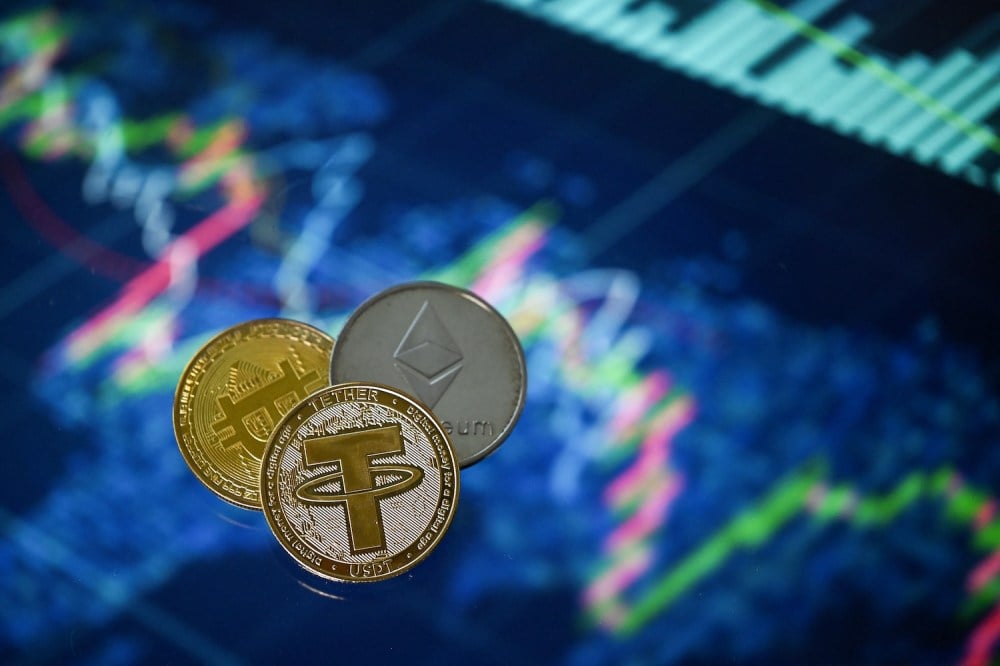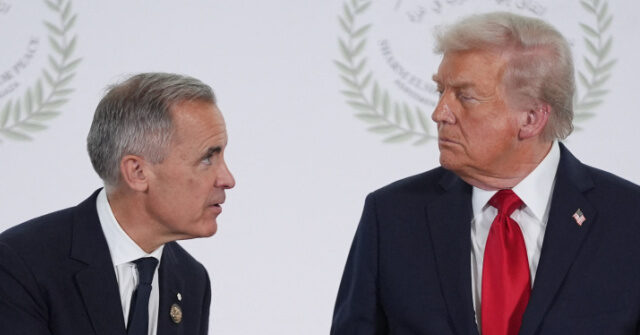While the major parties in the U.S. Congress agree on very little these days, there’s one issue that’s getting traction: stablecoins. Politicians on both sides of the aisle want to accelerate the development of stablecoins to support the U.S. dollar’s reign as the world’s reserve currency.
Unlike speculative assets that fluctuate in value, stablecoins are designed to always be worth $1, hence the name. Stablecoins have the potential to fix problems in the U.S. payments system, but the debate about their use is only happening in the context of cryptocurrency policy and alleged conflicts of interest within the family of President Donald Trump. Major crypto boosters, with the support of the Trump administration, are making a full court press to change U.S. law to create national charters to issue stablecoins.
If stablecoins scale to a multitrillion-dollar market—as these boosters hope for—then this could widen the trade deficit, harm small enterprises, hand more power to Big Tech conglomerates, and reduce leverage for the United States and its allies when it comes to global security.
Discussion of stablecoins is often lumped in with crypto markets, where they are most frequently used today. But they have a range of uses in both the brick-and-mortar and digital economies. They could help to create a new set of faster payment rails, making transactions more instantaneous.
Retailers are already looking to sidestep the steep fees charged by monopolistic networks by embracing new ways to pay. Digital dollars could complement “pay-by-bank” tools and other innovations. And if stablecoins prove to be a cheaper and faster way to move funds, then they could help the greenback maintain its dominance.
Stablecoins aren’t issued by the U.S. Treasury or the Federal Reserve, though a stablecoin issuer—such as a Big Tech firm or a retail giant—could tender digital money in exchange for real money. Pending legislation, however, would allow these digital dollars to sit outside of the banking system, and that’s where some of the problems kick in.
When we put money in a bank, that bank doesn’t keep it in a vault. The bank lends the money to businesses, homebuyers, farmers, and others. Those depositors have confidence that they can access their cash, since banks can pledge loans on their books to get cash from the Federal Reserve at any time. If the bank fails, federal deposit insurance kicks in, and depositors get their money back as long as the amount falls within the legal limits (which are, by the way, overdue for an increase ).
The so-called GENIUS Act for stablecoins won’t make issuers pay for deposit insurance. It would create a totally different scheme. Unlike banks, issuer wouldn’t make traditional loans with the funds that they collect. Instead, they would back the stablecoin with liquid assets such as Treasury securities, offshore dollars, and money market fund assets.
A major stablecoin issuer today has roughly $120 billion in exposure to Treasurys. These purchases of U.S. government debt appear to be part of the Trump administration’s push for stablecoins. Treasury Secretary Scott Bessent believes that stablecoins could attract $2 trillion of new demand for U.S. government debt securities, which could finance deficit spending. But where will the trillions of dollars in new demand for Treasurys come from?
Some of these trillions will come from overseas. With the majority of global trade denominated in U.S. dollars, trading partners could certainly increase the volume of payments made via stablecoin. But if this truly generates new demand from foreign investors, then this would bid up the value of the dollar—which seems to be the opposite of what the administration wants. After all, a stronger dollar would make U.S.-made goods less competitive to export, resulting in even bigger trade deficits.
Much of this demand would probably come from within the United States as well. But that still poses problems. American households and businesses would move cash out of banks and into digital dollars issued by firms that aren’t banks. If the deposit outflow from banks is substantial, then this would make it tougher for the domestic businesses that rely on bank loans.
While large corporations have an array of options to borrow, local and regional businesses—and farms—largely borrow from banks. With fewer deposits to transform into loans, that would push up the cost of credit for these businesses. (Many of these businesses are the same ones scrambling to access cash to stock up on inventory before tariffs fully kick in.)
Of course, all of this would be a boon for the United States’ Big Tech giants, which have long been jealous of their Chinese counterparts’ foothold in digital payments and have been pushing to issue digital currency in the United States. Chinese companies WeChat Pay and Alipay have a window into a massive share of retail purchases in the Chinese economy.
Google and Apple, meanwhile, have already penetrated much of the U.S. digital payments market. The Justice Department is currently battling Apple in court over allegations of anticompetitive abuses regarding its Apple Pay service. But issuing their own currency would allow the tech companies to control their money directly, giving them further power to steer business to partners and advertisers and even allow them to dynamically price a product based on user surveillance data.
There are other consequences, too. If Congress weakens requirements for nonbank firms dealing in stablecoins to detect terrorism financing and money laundering, that weakens global security. After the invasion of Ukraine, Washington and its allies deployed a series of sanctions, but if these sanctions become less effective, then the United States’ alliances will lose leverage and make Washington more likely to deploy noneconomic weapons.
For consumers, it’s even trickier. Trump administration officials are also pushing to stimulate demand for longer-term Treasury notes and bonds. But unlike short-term Treasury debt, if these longer-term Treasurys decline in value, then that could spark a panic or run—as we saw with the failure of Silicon Valley Bank in 2023.
Without deposit insurance, consumers may need to battle through bankruptcy proceedings to get any of their money back. Or more likely, because it may be difficult to distinguish between their insured bank balances and their uninsured digital dollars, the Federal Reserve could pull the trigger on yet another bailout—a routine occurrence when it comes to money market funds, another deposit-like account that exists outside the insured banking system.
In 2019, Facebook proposed the creation of a new global currency, Libra, to operate on its platforms and with its partners. Libra was scrapped, but something like it may soon emerge. At the time, Trump tweeted that if Facebook or other companies wanted to do this, they should get a bank charter and follow banking laws. Maybe he had the right answer all along.
Rather than having digital dollars issued by massive technology conglomerates and retail chains, it’s wiser to develop stablecoins through banks. This would mitigate the risks of panics and unexpected devaluation while ensuring that funds can be lent out for home construction, small business expansion, and other uses. Of course, banks that are already too big to fail shouldn’t get even bigger, but small and midsize banks could grow their deposits by embracing new forms of payments such as stablecoins.
While it’s tempting to think that the issuance of dollar-denominated stablecoins is a niche policy matter regarding crypto, it isn’t. The consequences for the trading and financial system, the global sanctions regime, the role of Big Tech, and the dollar’s power as a reserve currency can’t be overlooked.
The post Stablecoins Come at a Price appeared first on Foreign Policy.




